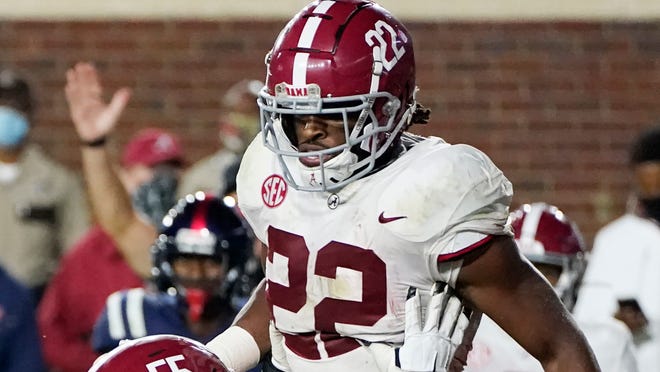Michigan State emphasizes versatility as college football plays during pandemic
 Matt Charboneau
Matt Charboneau
Michigan State has had its share of players over the years that have played on both sides of the ball.
Whether it be switching from season to season or getting action on offense and defense in the same game, the Spartans have been willing to utilize players in multiple positions.

Tony Lippett started the final two games of the 2014 season at cornerback, the same year he was named the Big Ten’s top wide receiver. Cornerback Justin Layne began his career on offense, running back Jeremy Langford played multiple spots on both sides of the ball before anchoring the ground attack in 2014 and 2015, and most recently, Julian Barnett played wide receiver last season as a true freshman before shifting over to cornerback heading into 2020.
Even with a new coaching staff — Mel Tucker took over in February for Mark Dantonio — the opportunity likely will be there.
But the one key difference these days is with COVID-19 constantly a factor, the Spartans, like so many other teams, could quickly find themselves scrambling to fill holes if there is an outbreak. It’s forced them to think about how they could get creative with the roster if need be.
“At some point, we're going to be doing some level of cross-training, even across the sides of the ball,” Tucker said as Michigan State prepares for its opener against Rutgers on Oct. 24. “But certainly, the cross-training within the position group is happening now, making sure guys can play multiple positions within their segment, whether it's the secondary or the offensive line or the receiver position. If guys know multiple positions, then you have more flexibility and you are better able handle injuries or anything that might be COVID-related.”
The concept makes sense. Even with 85 scholarships and rosters that hover around just more than 100 players, injuries can pile up quickly and create some thin depth charts. Add in the COVID aspect, and it could cause plenty of problems.
It’s why the work already has begun to try and determine who might fit in more than one role.
“I have a depth chart every day and I have a column that's just COVID situations,” offensive coordinator and quarterbacks coach Jay Johnson said. “Everybody's dealing with it and it's just a part of the new normal right now. But what we're constantly looking at, as we've talked about with Coach Tuck about, is developing the whole roster. I've even started to look, ‘OK, well now I have a certain player maybe this position. Boy, if something happens here, can I move that player over here?’”
Some players who could make those moves might seen obvious. Barnett just played wide receiver last season, so he would likely be able to make that shift fairly well, while sophomore J.D. Duplain went through spring practice on defense before flipping back to offense in the fall and starting five of 10 games at left guard as a freshman.

Sophomore tight end Adam Berghorst also began last season at defensive end before shifting to offense and junior running back Connor Heyward has a history of playing multiple offensive positions, while most players on the roster likely spent their high school careers on both sides of the ball.
“We haven't made any of those changes yet, but we're looking at that because, as you know you could get impacted pretty quickly,” Johnson said last week. “What we're trying to look at is like in baseball (they have) those utility guys that might have the ability to do several things for us. We're trying to identify those guys and now that we've gotten the pads on we'll get through this first week here and we might start looking at and maybe even cross training some players to help us in those situations if we do get impacted.”
While moving positions is one thing, the simpler move is having everyone in a position group capable of making a shift within that group. For example, Tucker talked about how an offensive lineman that has typically played tackle would also be expected to know the guard and center spots. Or a defensive back who’s been a safety would also play cornerback.
Michigan State has several of those players already. Luke Campbell has started at least one game at every offensive line spot except center while defensive backs Tre Person and Dominique Long have played both cornerback and safety.
The goal is to have as much flexibility as possible while knowing everyone will need to be ready to play, regardless of class or standing on the depth chart at any particular time.
“We’ve talked as a staff from early on that we were going to need to develop the entire roster this year, this season,” Tucker said. “All the scholarship players, walk-ons, everybody’s going to have to be developed in some way, shape or form to be able to at some point go in the game and play winning football for us if their number is called.”
mcharboneau@detroitnews.com
Twitter: @mattcharboneau